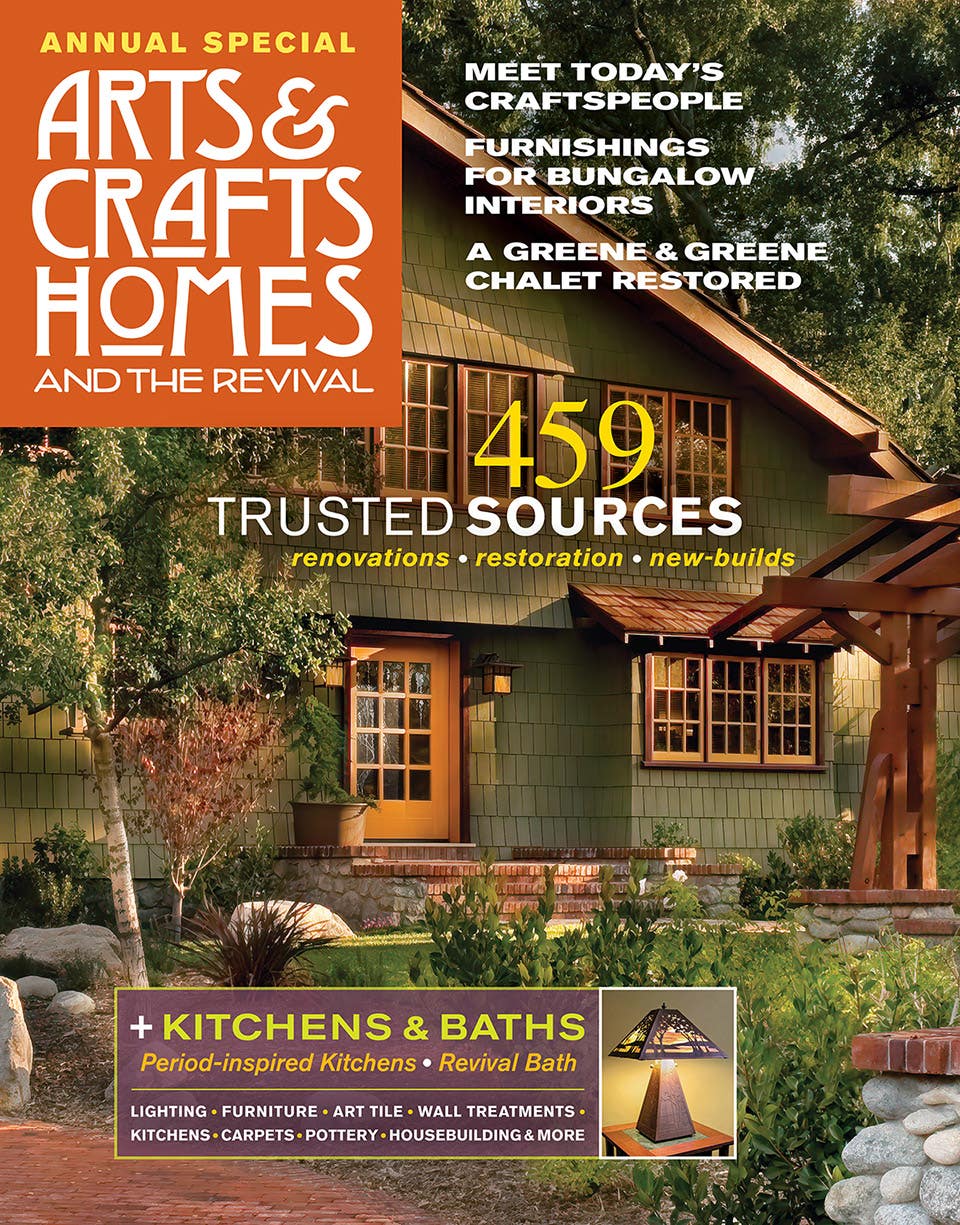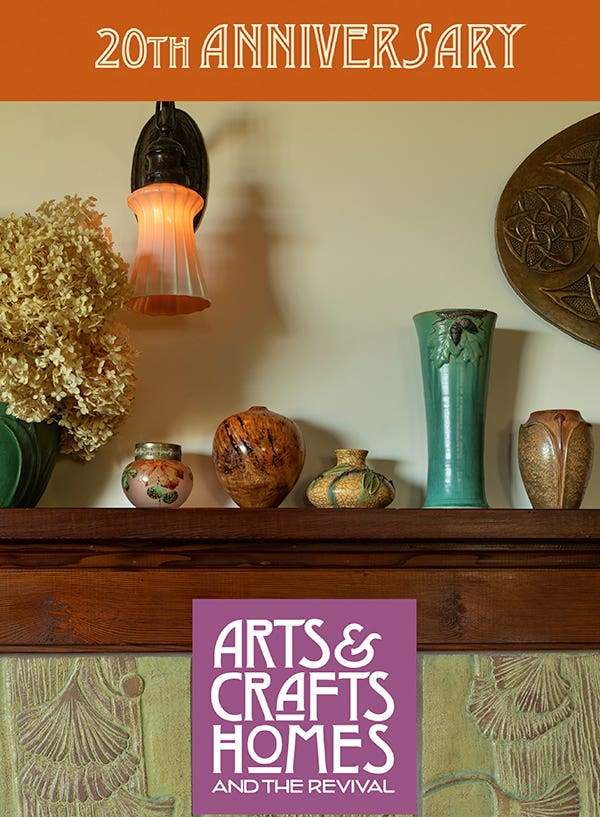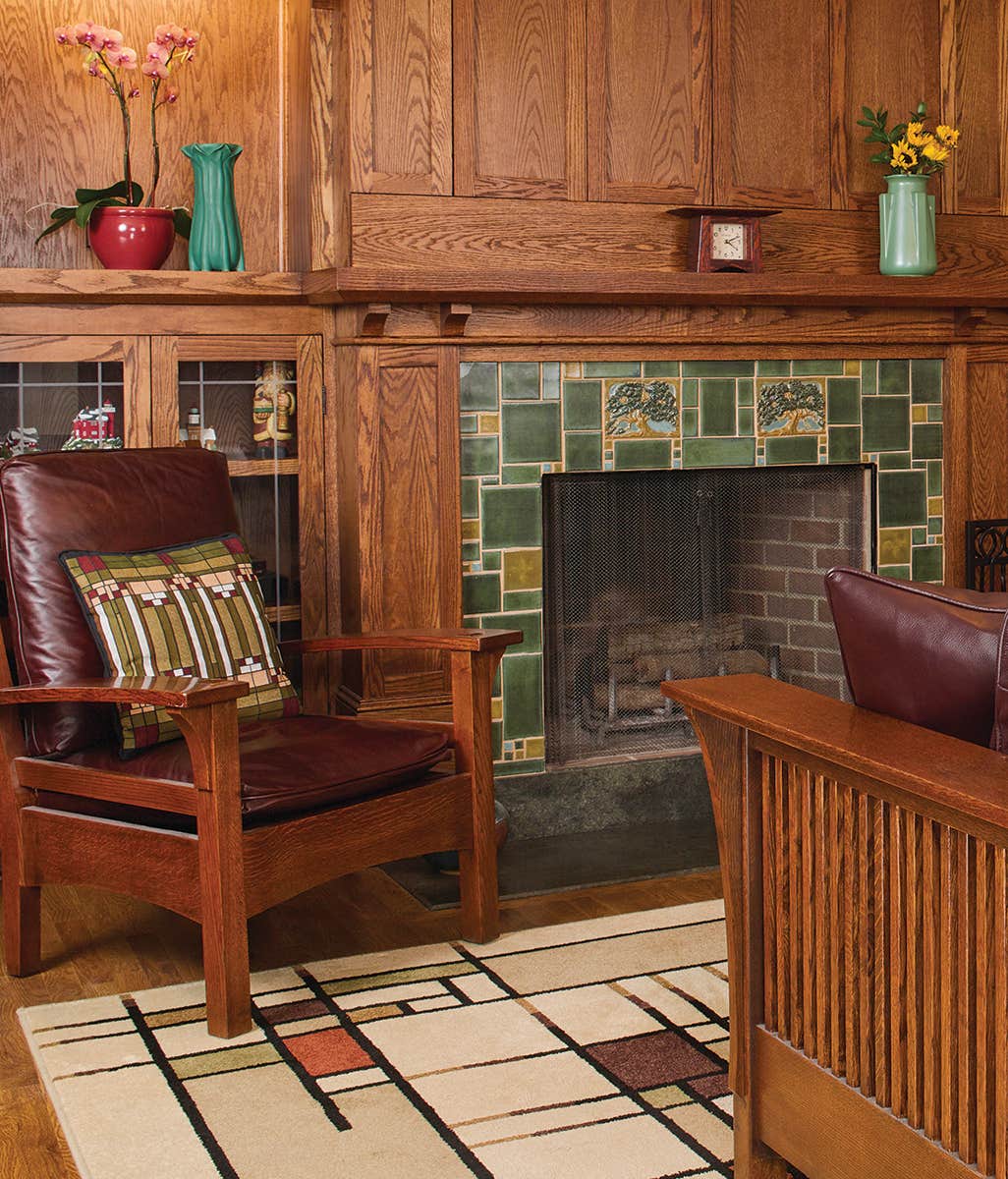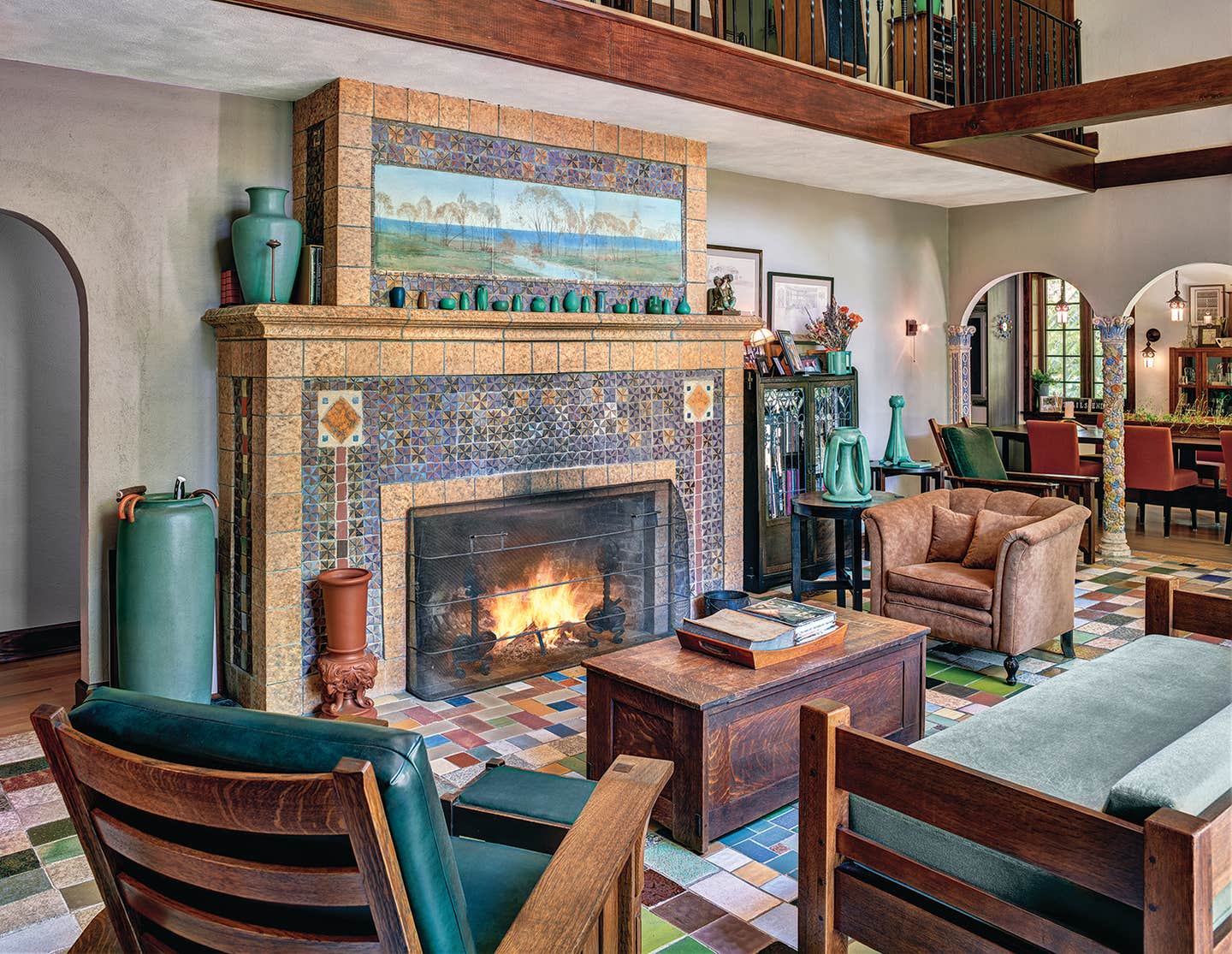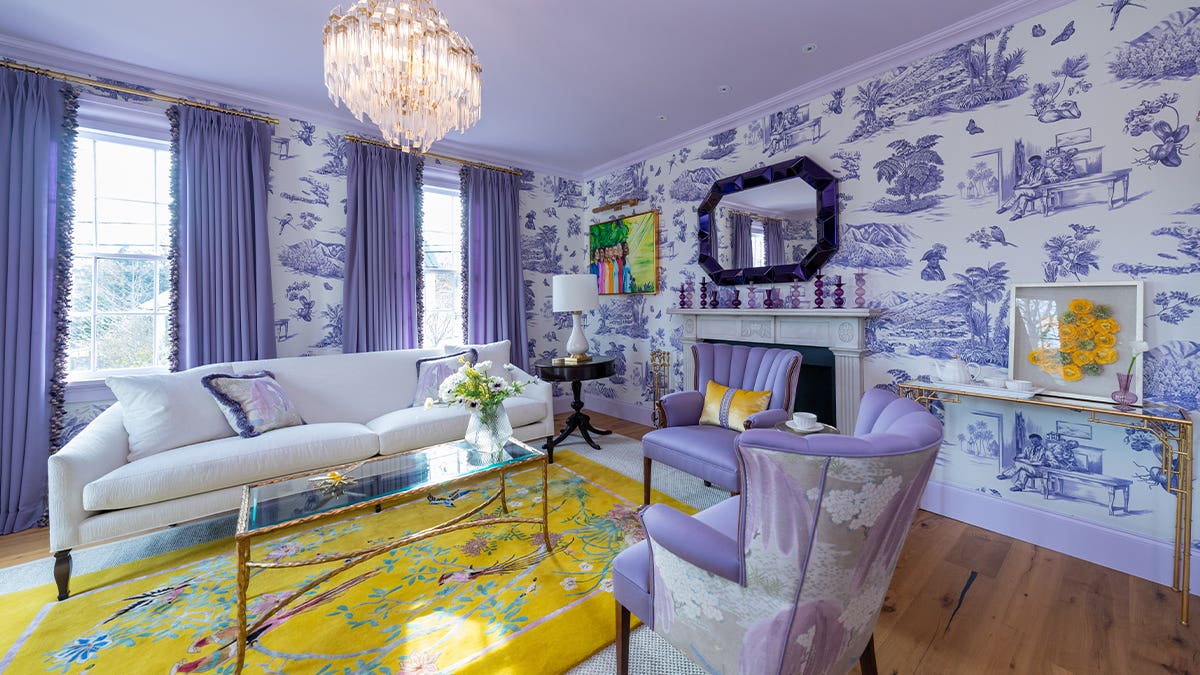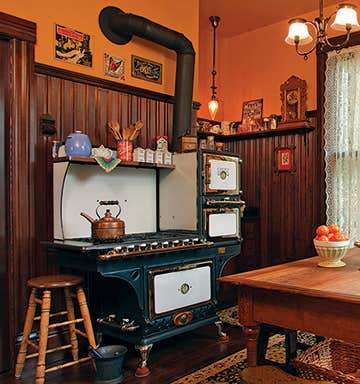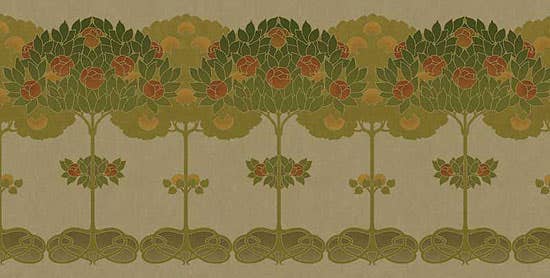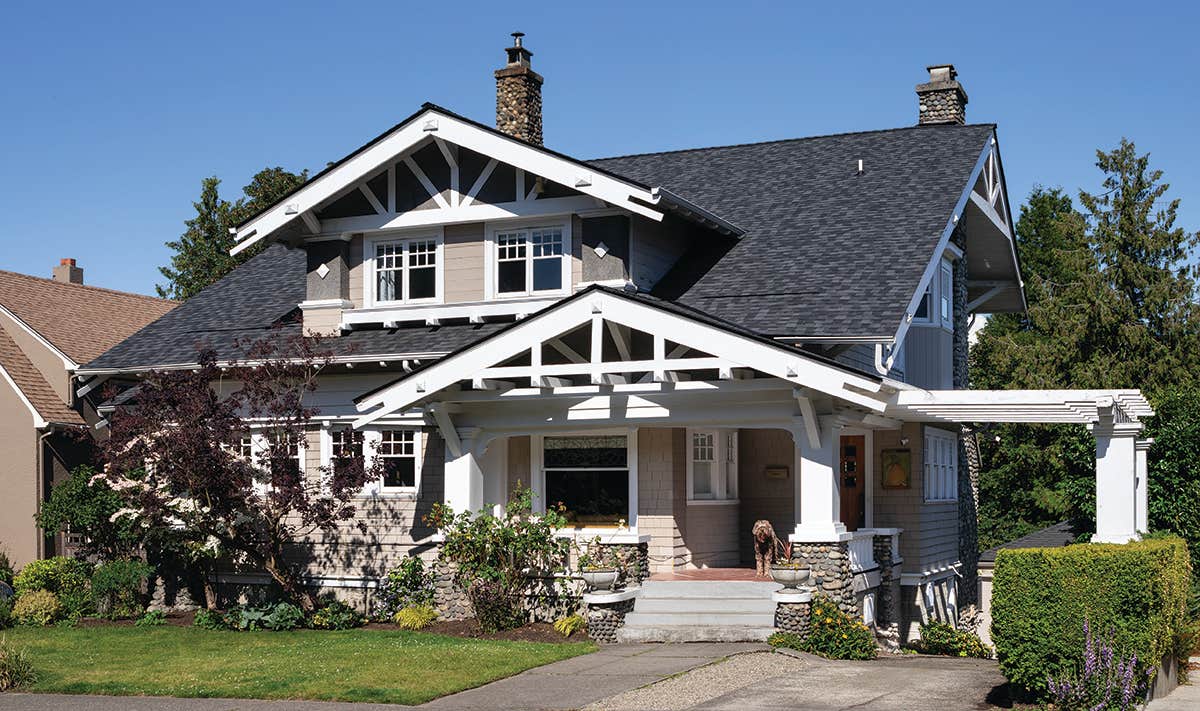Arts & Crafts Furniture & Objects of Art
Antiques, reproductions and inspired contemporary work mix well in revival interiors.
Many people are uncomfortable buying furniture—and not only because of the cost. Here is some basic advice: (1) Embrace what you love and can live with long-term. (2) Buy good furniture, even if it means living with folding chairs and patio wicker while you save to buy one high-quality piece a year. Later on, you can move the wicker from the living room to the porch. (3) Take cues from the age and style of the house.
You may not want to live in a museum, but furnishing in sync with the date and design vocabulary of the house is a shortcut to non-faddish rooms that “look right.” Your house is giving you clues, so you might as well start there.
A period classic—a Morris chair, a spindle daybed—can anchor a room. Do mix in antiques to avoid the boring, matched-set look of some contemporary interiors. Antiques add history and personality to a room, but many times they are not practical—as with chairs that are used every day, for example. “The majority of collectors we know are happy buying new objects to put alongside their antiques,” says Aminy Audi, president and owner of Stickley, a company of the original Craftsman period, which the Audis revived. Reproductions are great for hardworking rooms and when you need a full set. Seek out specialty suppliers and artisans who do reproduction or adapted styles.
Arts & Crafts-period homes are forgiving of an eclectic approach. Right from the beginning, the house probably mixed Craftsman and Colonial Revival motifs in woodwork, and certainly in the furniture. Sturdy Colonial-era classics (like benches and Windsor chairs), rustic furnishings, wicker, iron, and more typical Arts & Crafts styles work together. Rectilinear Stickley-type furniture also marries well with Modern furniture.
To get an integrated, usable room at reasonable cost, many people mix good-enough pieces with reissues of classic designs, future heirlooms, and antiques.
For years, a growing number of artisans and manufacturers has been offering period-inspired furniture, as well as such decorative pieces as pottery and art prints. The work includes documentary reproductions (near copies of original pieces). Many more artisans create interpretive new designs, with allusions to previous Arts & Crafts styles and also such earlier American furniture as that produced by the Shakers.
As was true 100 years ago, there are many languages of Arts & Crafts. British work (by Godwin, Voysey, and Mackintosh) is often more delicate, and later work leans toward Art Nouveau. American Craftsman pieces by Stickley and the Roycrofters are sturdy and rectilinear; Wright’s Prairie School designs are proto-Modern, like the reproduction Barrel chair below; Greene and Greene’s are strongly Japanesque. German, Austrian, Russian, and Swedish influence may be present. This diversity continues.
Patricia Poore is Editor-in-chief of Old House Journal and Arts & Crafts Homes, as well as editorial director at Active Interest Media’s Home Group, overseeing New Old House, Traditional Building, and special-interest publications.
Poore joined Old House Journal when it was a Brooklyn-brownstoner newsletter in the late 1970s. She became owner and publisher and, except for the years 2002–2013, has been its editor. Poore founded the magazines Old-House Interiors (1995–2013) and Early Homes (2004–2017); their content is now available online and folded into Old-House Journal’s wider coverage. Poore also created GARBAGE magazine (1989–1994), the first unaffiliated environmental consumer magazine.
Poore has participated, hands-on, in several restorations, including her own homes: a 1911 brownstone in Park Slope, Brooklyn, and a 1904 Tudor–Shingle Style house in Gloucester, Massachusetts, where she brought up her boys and their wonderful dogs.

